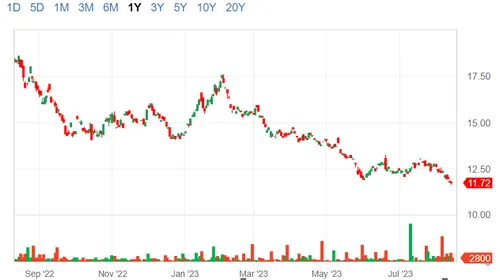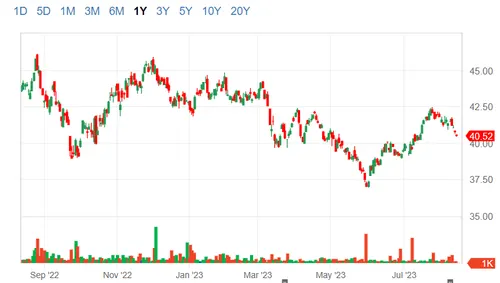Our partner, XM, lets you access a free demo account to apply your knowledge.
No hidden costs, no tricks.

Agriculture is an integral part of human life. While food security remains a primary concern for countries around the world, and probably always will be, investing in agriculture and driving sustainable growth are paramount to human survival.
However, picking individual agriculture stocks and commodities can be a difficult task that demands a thorough knowledge of the different sectors of agriculture, as well as the geography and climate of the region where these companies operate.
To avoid such concentrations of risk, most investors that want to add agriculture to their portfolios, resort to ETFs that are diversified across several agricultural sectors or geographic locations to ensure diversification.
Agricultural ETFs may invest in a wide variety of assets, ranging from commodities futures to equities of major agricultural companies while using derivatives to increase potential returns.
The prices of agricultural ETFs that invest directly into commodities can be cyclical, as the supply and demand shift on the global commodities market, while equity-based investments may have more variable risks associated with the management and daily operations of the companies in question.
If you are interested to find out more about the best agricultural ETFs you can invest in, this investfox guide is for you.

The Invesco DB Agricultural ETF has returned roughly 3.5% over the past 12 months. The ETF is primarily invested in mutual funds and provides a steady and relatively stable opportunity for investors to gain exposure to the global agricultural market.
For investors with a more short-term focus, DBA might not be the best choice, as the fund tracks an index and its performance is entirely dependent on the performance of the DBIQ Diversified Agriculture Index Excess Return.

Over the past year, the VanEck Agribusiness ETF has returned -9.27%, which is due to the slow correction happening among its constituent companies, as well as the major supply chain issue facing the global agriculture market.
Overall, MOO is a solid option for investors that are bullish on the long-term conditions of the global agricultural sector.

TAGS has returned roughly 1.6% over the past 12 months, with two noteworthy major price fluctuations happening in June and July of 2023.
The growing price of wheat and corn has skyrocketed the fund into new highs in 2023, with the 5-year performance standing at a 50% gain for TAGS investors.

Global X AgTech and Food Innovation ETF has returned -36.5% over the past 12 months, which has been a difficult period for overvalued tech stocks. However, with considerably lower valuations, KROP may be an attractive long-term investment for those who are bullish on the companies included in the ETF’s portfolio.
The ETF also invests in Chinese companies, which have also taken massive hits in 2023 - resulting in an overall negative performance throughout the year.

VEGI has returned -7.75 over the past 12 months, which has been partially held up by the fund’s outsized holding of John Deere stock (DE), which has gained 17% over the same period of time.
This poses some risks for the fund, as the performance of VEGI is heavily influenced by the price of John Deere stock.
However, the fund also includes a number of other prospective agricultural stocks that have plenty of upside potential and VEGI is positioned to be one of the most attractive alternatives on the market.
Understanding the inherent benefits and risks associated with investing in agricultural ETFs is essential to decide which one best fits your portfolio and whether to invest in one at all.
Our partner, XM, lets you access a free demo account to apply your knowledge.
No hidden costs, no tricks.
Agricultural ETFs may invest in commodities, shares of agriculture companies, or derivatives. Depending on the assets they invest in, agriculture ETFs may be relatively stable, or highly volatile.
Yes. Agricultural ETFs, much like any other exchange-traded fund, are available for trading on major stock exchanges. Buying and selling their shares is easy, as these funds are often highly liquid, which also removes the hassle of individually picking commodity futures and derivatives to trade.
Depending on what assets agricultural ETFs invest in, they can vary greatly in risk. For example, an ETF that uses commodity futures and other derivatives will be considerably more volatile than the one that invests in the stocks of agricultural companies.